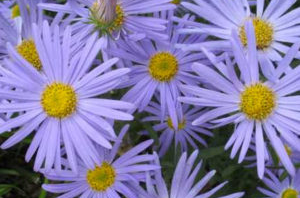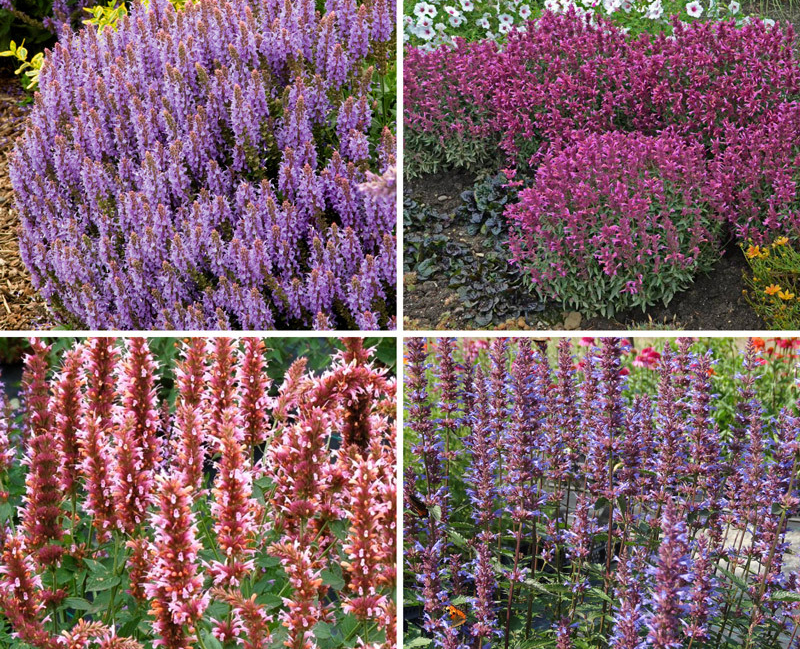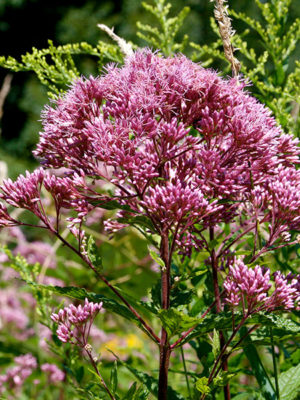Dog Day Perennials
What’s In The Garden:
We’ve entered the “dog days,” the time of year when Sirius, the Dog Star, rises just before the sun. In ancient times, people associated the late summer appearance of the Dog Star with outbreaks of malaria and other illnesses. Although we still refer to the “dog days,” most of the negative associations and attendant superstitions have been long f orgotten. For modern gardeners, August is the right time to add swaths of color to the landscape and enhance succession blooms. We recommend beginning with perennials, many of which are currently are in their full glory.
orgotten. For modern gardeners, August is the right time to add swaths of color to the landscape and enhance succession blooms. We recommend beginning with perennials, many of which are currently are in their full glory.
Some ideal “Dog Day Perennials” that are not as well recognized but deserve a spot in the garden include the following:
Kalimeris “Blue Star,” a Daisy-like delight, grows best in full sun. This is a low-maintenance, high performance plant with showy light blue flowers with yellow centers. Kalimeris tolerates drought and even clay-based soil, and makes its best impact when planted in masses in borders, cottage-style gardens, or “natural” areas.
Hardy Ageratum (Eupatorium coelestinum) is commonly called “Mist Flower.” This sun-worshipping plant reaches two to three feet in height, and i s favored for its fuzzy blue flowers that grow on red stems. Hardy Ageratum blooms from summer to early fall, and is an excellent groundcover. Bees and butterflies love it – and you will, too. It is easy to grow, and attracts insects that draw Eastern Bluebirds, Baltimore Orioles, Red-winged Blackbirds, and various warbler species.
s favored for its fuzzy blue flowers that grow on red stems. Hardy Ageratum blooms from summer to early fall, and is an excellent groundcover. Bees and butterflies love it – and you will, too. It is easy to grow, and attracts insects that draw Eastern Bluebirds, Baltimore Orioles, Red-winged Blackbirds, and various warbler species.
Cardinal Flower (Lobelia cardinalis) , a spectacular scarlet form of Lobelia, thrives in partial shade. Its showy flower spikes contrast with its deep green, sometimes bronzy, foliage. Be sure to get your Cardinal Flower situated in a moist or wet area and deadhead the plants to prolong the bloom time.
Turtlehead (Chelone sp.) produces dense flowers in red, purple, pink, or white. Often found growing along stream banks, Turtlehead craves damp soil. These plants grow two to three feet tall in full sun to partial shade.
Agastache is a favorite of birds, bees, and butterflies. This licorice-scented plant (hence the name “Anise Hyssop”) grows best in full sun and is both deer resistant and drought tolerant. This plant produces long-lasting blooms in white, pink, mauve, and purple. Varieties currently being grown at Rohsler’s include Blue Fortune, Rosie Posie, Cotton Candy, Red Fortune, Purple Haze, and Little Adder.
licorice-scented plant (hence the name “Anise Hyssop”) grows best in full sun and is both deer resistant and drought tolerant. This plant produces long-lasting blooms in white, pink, mauve, and purple. Varieties currently being grown at Rohsler’s include Blue Fortune, Rosie Posie, Cotton Candy, Red Fortune, Purple Haze, and Little Adder.
Yarrow’s fernlike foliage is reason enough to add this plant to your garden – but just wait until it blooms. Yellow and white were the standby colors for years, but Yarrow now blooms in red, peach, lilac, and magenta.
Yarrow attracts beneficial predator insects, making it a natural treatment for pests. It is also drought tolerant, deer resistant, and blooms from midsummer right through fall. Deadheading spent flowers will encourage Yarrow to re-bloom. Our Rohsler’s Grown varieties include Terra Cotta, Sunny Seduction, Saucy Seduction, Strawberry Seduction, and Moonshine.
Joe-Pye Weed, a prairie native, can reach an impressive eight feet. This is an easy-care plant that is deer-resistant and drought tolerant. Birds and butterflies are drawn to its blue, pink, or white nodding blooms. Many varieties also produce a sweet, summery perfume.
Helineum is part of the Sunflower family that is native to the Americas. This family of plants loves the sunshine, and produces yellow or orange composite flowers that look like Daisies. Some forms are known as Sneezeweed. In years gone by, Sneezeweed leaves were dried to make snuff, a product that was inhaled to induce sneezing and thereby expel “evil spirits.” These days, Helenium is used to add interest to native plantings.
Now that you’re in the know about late summer perennials, feel free to stop by and talk with our experts about adding a few Rohsler’s Grown Perennials to your own garden.
